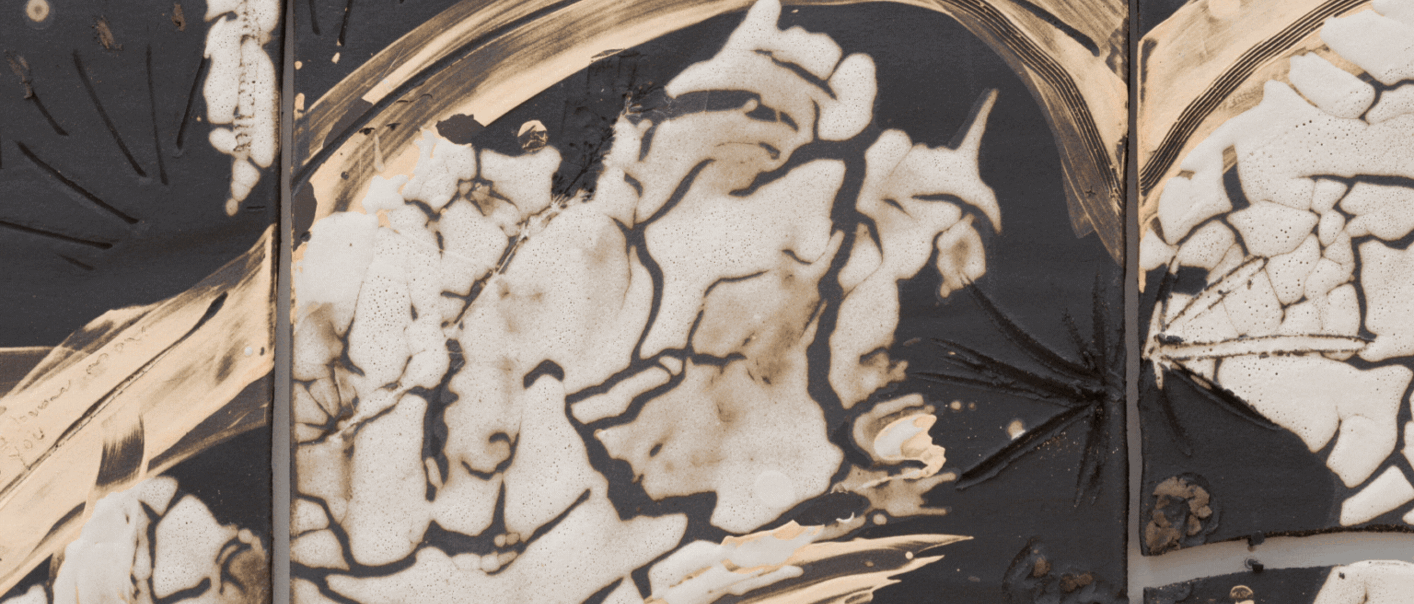

The works that allude to mapping represent the fluidity and complexities of reality, whether land, water or a vision. The memory of a place is interlinked with its landscape and territory. Mapping and memory reveal distortions, destructions and displacements. The works below represent questions of origin, location, proximity, and distance which are central to debates on contemporary culture and global interconnectedness.
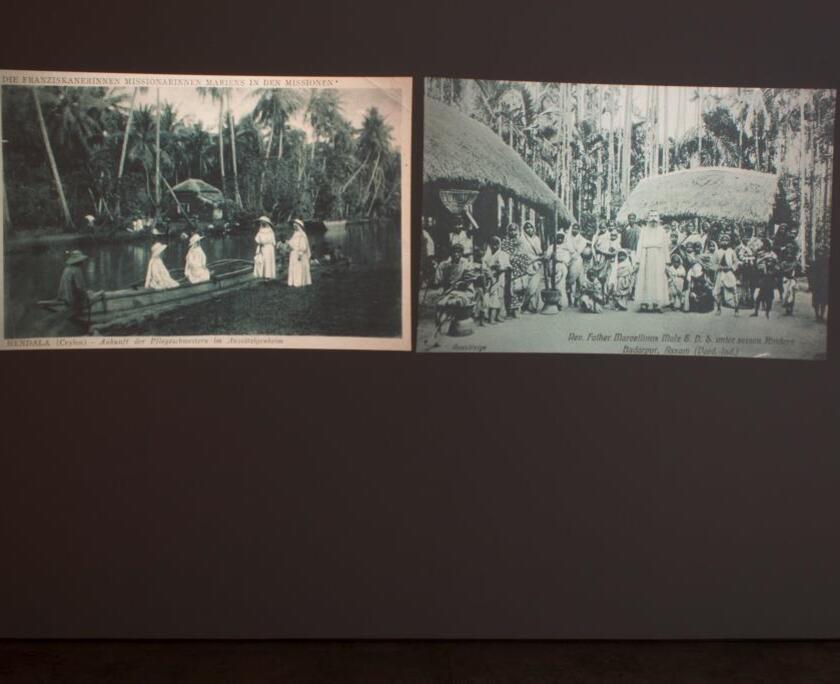
In Kader Attia's Dispossession, 2013, notions of maps, colonialism, and oppression come together around the obscure collection of African artefacts held in the Vatican Museum. Comprising of two slide projections and a video of different interviews, the work was acquired through the our Collections Fund at Frieze in 2016 and was donated to MIMA. Through a series of interviews Attia discusses what defines or blurs the boundaries of cultural identity. Attia’s installation highlights the dangers of cultural imperialism and economic exploitation hidden behind the facade of religious conversion, while also addressing pivotal concerns about social justice.
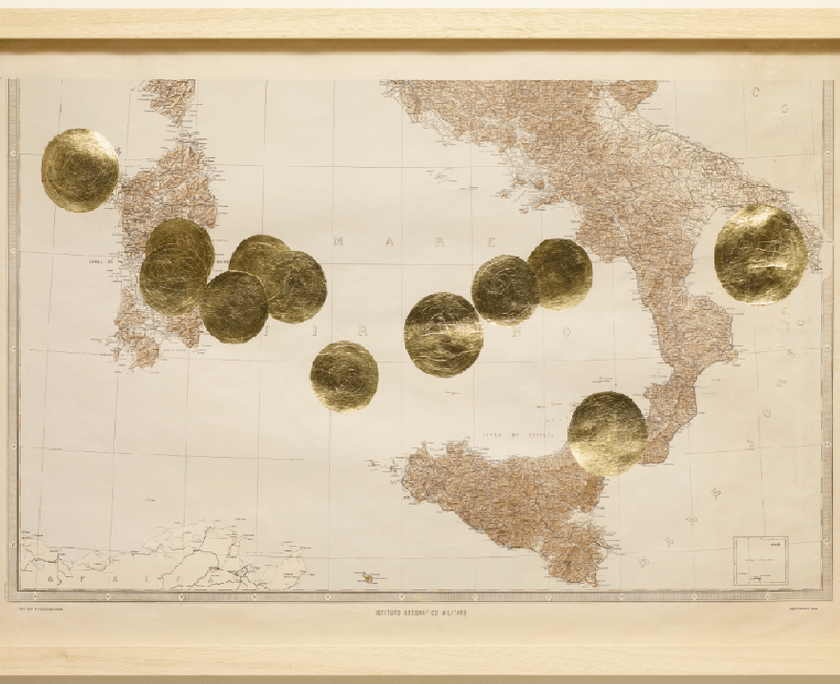
Giulia Piscitelli’s work for the Ferens Art Gallery in Hull addresses spiritualism and mapping. Christ Rescuing Saint Peter from Drowning, 2017, superimposes gold leaf discs that represent the haloes of saints from Early Renaissance altarpieces to a map from 1938 after the Italian invasion of Eritrea and Ethiopia. Piscitelli draws a parallel between religious and political belief systems reflecting on the shifts and changes over time spiritually, politically, and earthly. The dated map highlights the historical changes of the territorial borders produced by humans throughout violent political contexts. Piscitelli thinks of land and sea, borders, and territories -- how these notions define a sense of self and other. Her work highlights how man-made constructs affect collective understanding.
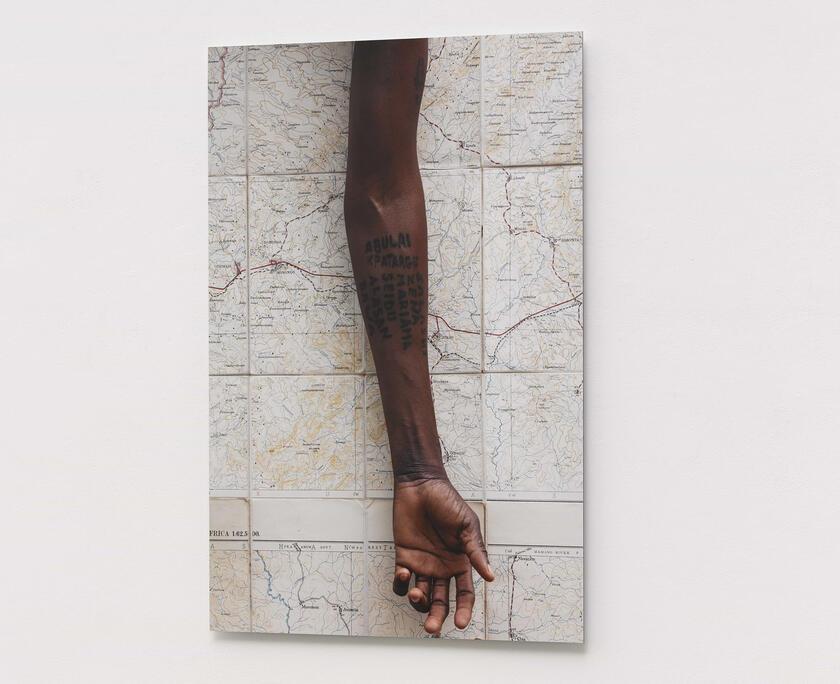
Mapping is also present in Ibrahim Mahama’s ten photographic C-prints from 2019. Eight were donated to Norwich Castle Museum & Art Gallery and two for Danum Gallery Library and Museum, Doncaster. The works depict maps of Ghanian routes overlapped with tattooed arms. The maps represent the routes that migrant workers have to travel to work in the mining industry in the South of the country; and their tattoos are often the only way of identifying the workers in rural parts of Ghana. It is often said that cartography is the tool of the colonial project as the first maps of Ghana were drawn by colonisers; opening up questions of collective experience of oppression physical and geographical.

The link between bodies and geography is also present in the work of Esna Su, The Burden I – Head Piece, 2021, bought for Cartwright Hall Art Gallery, Bradford is a woven piece of vegetable tanned leather that references the borders between south of Turkey and Syria and the millions of refugees that crossed this border escaping the Syrian War.

Larissa Sansour’s Nation Estate, 2012, is a videowork, a joint acquisition for the Imperial War Museum and Wolverhampton Art Gallery exploring border crossing and restrictions placed on Palestinians on occupied territory. The video proposes a satirical solution to the Israeli-Palestinian conflict by creating a fictional high-rise tower that would contain ‘Palestine’.

Migrants and crossings are also the theme of Aliza Nisenbaum's Susan, Aarti, Keerthana and Princess, Sunday in Brooklyn, 2018, portrays a family that is the result of immigration and adoption, creating a Indian and African-American collective heritage. The family group points also to historical undocumented migrants, who are unrepresented because of race, gender, nationality, class or sexual preferences reversing what historical portraiture painting strands for. The portraits refers to physical and ideological borders that a family can go through.
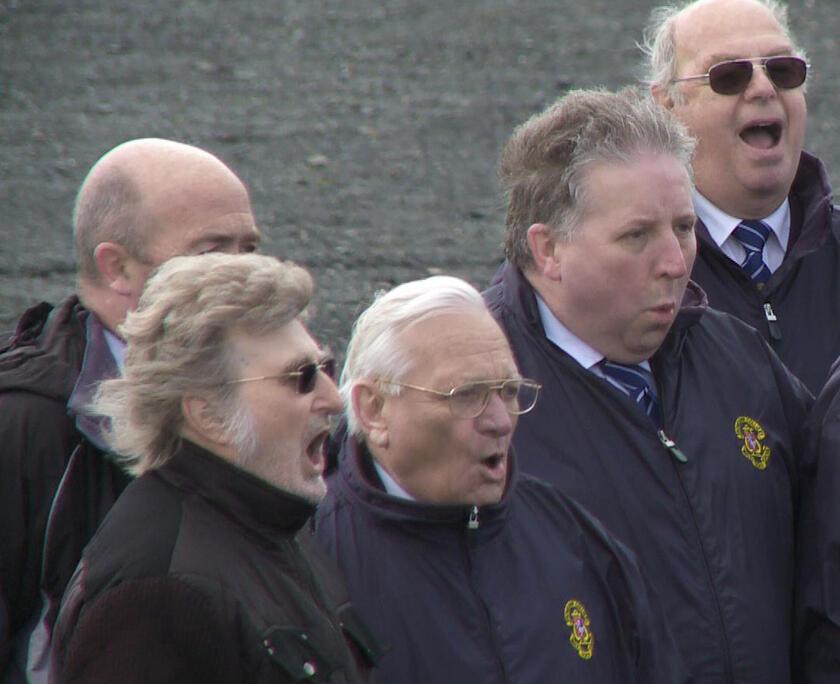
The sound piece and video collaboration from Mikhail Karikis and Uriel Orlow, The Sounds from Beneath, 2011-12, is a about the changing landscape of industrial England. The artists asked the Snowdown Colliery Male Voice Choir in Kent to vocalise the industrial sounds of a former coalmine based on their memories. The result is a moving ode to landscape that is extinct. The miners tell a wordless story about a landscape that is gone and the strength, loss and resilience of a community. The mine and its complex history is brought back as the choir sings about their past. Standing in solidarity on the ex-mining grounds they are grouped in a linear formation singing and lamenting on that earth that ounce gave them work. The colliers’ cracked and rough hands mirror the cracks and furrows of the mined earth, further relating the physical memory of a place to the physical landscape.
